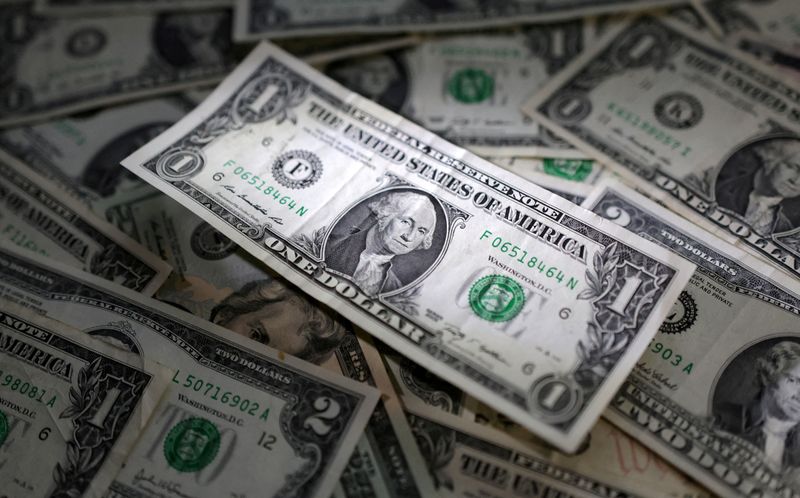By Kevin Buckland
TOKYO (Reuters) – The U.S. dollar recovered from a three-week low versus the yen on Wednesday and held its ground against other major rivals as traders pondered the chances of a Federal Reserve interest-rate cut this month.
South Korea’s won stabilised following its plunge to a two-year low on Tuesday and then a partial recovery after President Yoon Suk Yeol first unexpectedly declared martial law and then abruptly reversed the decision just hours later following a standoff with parliament.
Dealers said the country’s central bank may have supported the won at Wednesday’s open by selling dollars.
The Chinese yuan languished near its lowest in more than a year in offshore trading, pressured by renewed tariff threats from incoming U.S. President Donald Trump, with traders watching how far Beijing is willing to let its currency slide.
Australia’s dollar weakened after data showed the economy expanded by less than economists estimated.
The euro held its ground above its recent two-year trough, as French lawmakers prepared to vote on no-confidence motions later in the day that are all but certain to topple the government.
The U.S. dollar index, which measures the currency against six top counterparts including the yen and the euro, added 0.07% to 106.39 at 0120 GMT.
The dollar added 0.18% to 149.90 yen, continuing its recovery after dipping to 148.65 yen in the previous session for the first time since Oct. 11.
The dollar got some support on Tuesday after data showed U.S. job openings increased moderately in October while layoffs declined, even as Federal Reserve officials on the day did not provide definitive guidance on what they intend to do at the conclusion of their next policy meeting in two weeks’ time.
Traders are waiting for crucial monthly payrolls data on Friday for more steer on the rates outlook, while a private payrolls report due later on Wednesday will offer something of a preview.
Market-implied odds of a quarter-point rate reduction on Dec. 18 last stood at 73%, according to CME’s FedWatch Tool.
The euro was little changed at $1.0506, where it has been making a home this week as the political crisis in France comes to a head. On Nov. 22, it had tumbled as low as $1.03315.
“We’re at the tail end of the crisis,” said Marc Chandler, chief market strategist at Bannockburn Forex in New York.
“They can’t have an election until next July. So what they’ll probably do is appoint a prime minister and try again, or let Barnier become the caretaker prime minister and pass some laws to keep the government going until July.”
Sterling was steady at $1.26645.
The won was little changed at 1,413.80 per dollar after beginning Wednesday’s trading with a 0.5% jump that reversed almost all of the losses of the previous session, when it plunged as low as 1,443.40 per dollar for the first time since October 2022.
The offshore yuan edged down to 7.2948 per dollar, inching back towards the previous day’s low of 7.3145, the weakest since November of last year.

The Aussie fell 0.4% to $0.6461. Australia’s economy grew at the slowest annual pace since the pandemic in the third quarter.
Real gross domestic product rose 0.3% over the three months to September, missing market forecasts of 0.4% growth.



